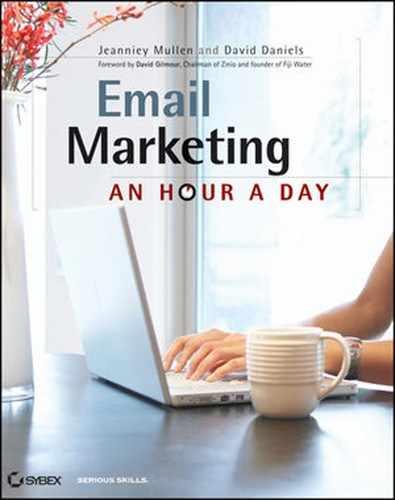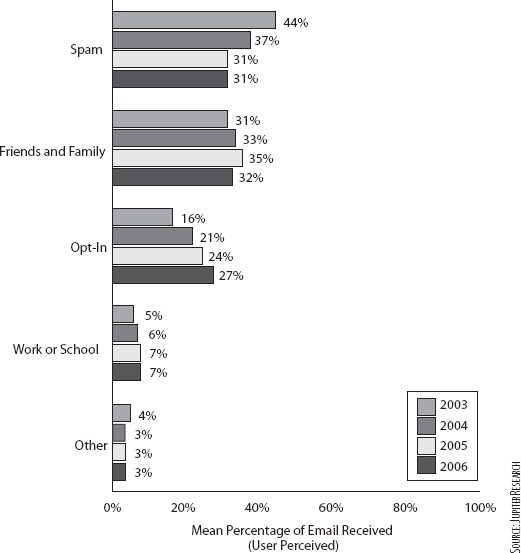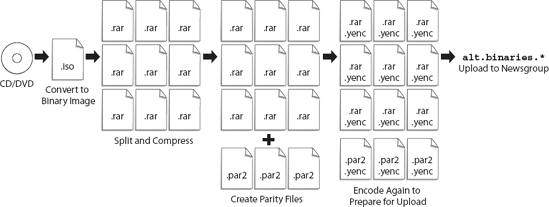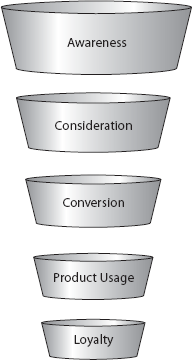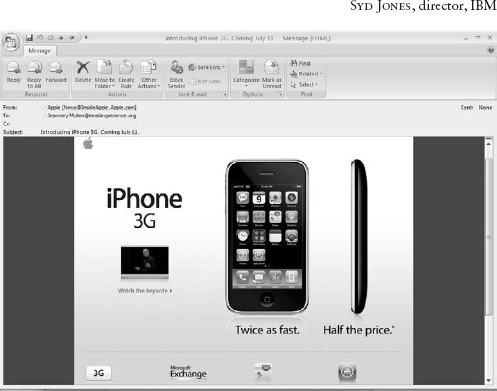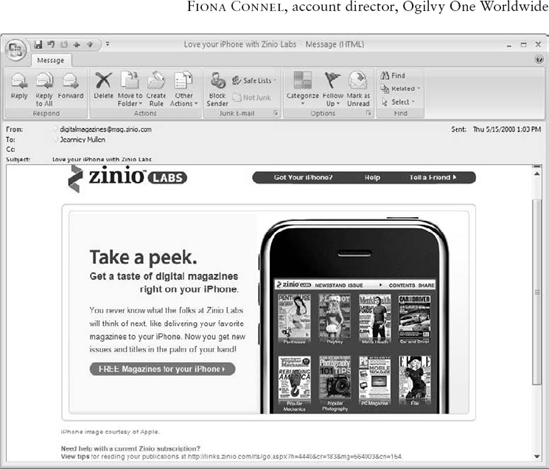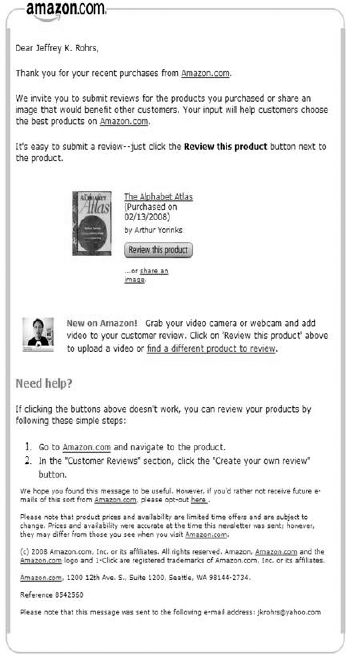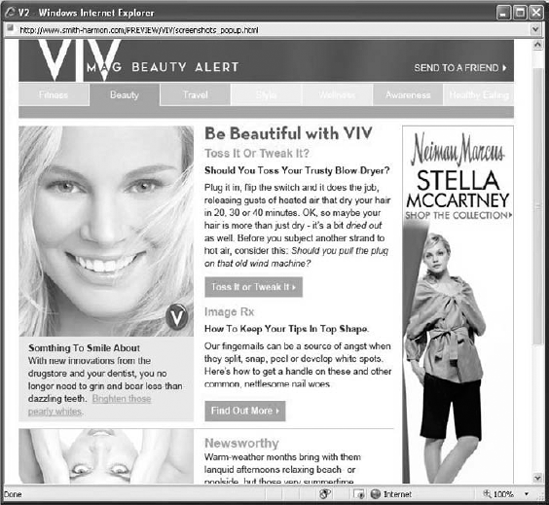Email marketing means different things to different people. Some see it as a critical communication link between consumers and the brands they trust and love; others see it as a thinly veiled, intrusive marketing tool. Either way, the email marketing you conduct today faces stiff competition from the email communication that is now the backbone of our digital lifestyles. This chapter starts with a brief history of email marketing and then looks at the value email marketing offers companies today.
Chapter Contents
How We Got Here
What Email Means to Your Audience
The Five Types of Email
Understanding the Economic Impact of Email
In the early 20th century, noted English mathematician and philosopher Alfred North Whitehead said, "Fundamental progress has to do with the reinterpretation of basic ideas." The progress in communication, both in scope and velocity, that is embodied by the prevalence of email is at its core a reinterpretation of a new way to communicate through the written word.
Email is progress. It is an integrated and indispensable part of all our lives. Its widespread distribution, made possible by the advent of the Internet, lowered the economic barrier to global communication and has made it a vital link to our families, friends, and communities. Just like the printing press 500 years before it, email is an effective and efficient means of mass distribution. Email also provides an easy way to conduct personal one-on-one dialogue.
Note
Write This Down: Today email is considered the backbone of all digital communications.
Email is the most popular form of asynchronous communication; it touches hundreds of millions of people around the world every day. Consider for a moment that, as of 2008, 73 percent of the North American population has email. In the United States, consumers spend as many hours online as they spend watching television. And out of all the many benefits that such pervasive Internet connectivity affords us, the primary activity that individuals use the Internet for is communicating with others via email. According to the JupiterResearch/Ipsos Insight Individual User Survey (July 2006), 87 percent of consumers in the United States cites email as the top reason for connecting to the Internet.
Note
Write This Down: In 2007, 234 trillion emails were sent. (Source: Omniture)
Seventy percent of U.S. Internet users has two personal email accounts, indicating that we need more than one email address to keep up with the many benefits of its purpose. The pervasiveness of email is underscored by the volume of messages a person receives. On average, each day email users in the United States receive 41 messages in their primary personal inboxes, with 37 percent saying they receive 31 or more messages daily. Based on the composition of messages they receive in these accounts (Figure 1.1), email users get an average of 10 promotional messages per day in their primary personal inboxes. These numbers are in addition to hundreds of email communications that people receive each week at work.
To summarize those statistics, the share of opt-in permission email in the consumer's primary personal inbox is increasing, and the amount of spam in the inbox is decreasing. According to JupiterResearch, opt-in permission email—mail that consumers have explicitly signed up for—accounted for 16 percent of the email in the consumer's primary personal inbox in 2003 and increased to 27 percent in 2006. During that same time period, the share of spam decreased from 44 percent to 31 percent.
Note
See the glossary for a complete definition of opt-in and other email marketing terminology you'll encounter in this book.
Email has brought tremendous efficiency to our lives. For example, it lets us confirm our purchases and it enables us to communicate with merchants. Spending in online retail in the United States will grow at a combined annual growth rate (CAGR) of 11 percent to reach $215 billion in 2012, which will generate 5 billion pre- and post-sale email contacts for U.S. retailers by that same year. Consumers can easily archive their transactions, and email can be a more efficient form of customer service than calling a merchant and sitting on hold. The value that we place on email cannot be dismissed.
Note
Write This Down: In 2006, 49 percent of all personal communication in the United Kingdom was written via email. (Source: Forrester)
With the massive amounts of email that we now receive and rely on daily to communicate, you might wonder, How did we get here? How did email become so powerful that it has changed the way the world communicates?
It did not start with Al Gore creating the Internet; he simply brought the U.S. Congress's attention—and funding—to this new communication medium when it was still in its infancy. Email originated with a group of inspired and hardworking individuals as a forum where professors, technology luminaries, and government officials could share ideals and conversations. As with all great ideas, their efforts started small and have now created a connected, global, worldwide society.
We can trace the roots of the commercial Internet and email marketing to 1969, during the Cold War, when the U.S. Defense Department created ARPANET, a computer-based messaging system designed to survive a nuclear attack. In its earliest form, this network was nothing more than what is commonly known as a file system where one person could post a note for another person to see in a folder.
By the early 1980s, the network had expanded to a small group of universities, all sharing the power of connected digital messaging. Getting connected to an early Internet service like Usenet was no simple matter (Figure 1.2). The computers they used in those early days were "mainframes," much bigger but much less powerful than the desktops and laptops we have today. At about the same time, the development of increasingly smaller and more powerful microprocessor chips was beginning to make the first personal computers available to the masses. As we all know, the PC quickly became essential to businesses of all kinds, as modern user-friendly software was developed. In the late 1980s, the first commercial providers emerged, such as CompuServe and MCI, and the consumer face of what would be forever known as the Internet soon followed.
This new phenomenon in personal connectivity quickly resulted in conversations around the water cooler such as, "Are you online?" and, "You can find me in the moondance Usenet group." This created a new world of communication, opening the Internet up not just for personal communication but for businesses as well. Email marketing soon emerged as one of the most profitable and effective forms of marketing.
Note
Write This Down: Ray Tomlinson of BBN is credited with inventing email in 1972. In those early days, it is estimated that there were only a few hundred email addresses.
Over the past ten years, email marketing has grown into one of the most flexible and in-demand applications and disciplines of the Internet economy. According to a study by comScore in August 2007, the worldwide web mail market includes more than half a billion people. The Radicati Group projected that there were nearly 1.2 billion hosted email inboxes worldwide as of October 2007, a number that is expected to rise to 1.6 billion by 2011. Email is still an emerging marketing medium, and the industry is young. It's not too late to start leveraging email, and you can use this book to optimize your current practices.
Although few people might have expected it in the beginning, email is now an integrated part of hundreds of millions of lives. It is more than marketing; it is a link to family, friends, and community. It is the lifeblood of the Internet.
Now that you know the history of email and its potential growth implications, you are ready to consider what email and email marketing mean to your audience. This is a critical element to master. Most consumers do not think in terms of marketing emails they receive and personal emails they receive; they differentiate in terms of personal value and relevancy. In fact, the term email marketing may not even resonate with your reader. Consumers love email messages that they feel enhance their lives; here's what one said at a presentation we gave:
My favorite types of emails are the notices from my online photo-sharing program letting me know my friends have posted new photos. It makes me feel really connected to them and makes me happy. | ||
| --Participant, Email Experience Council keynote presentation: "The Value of Email, in the Eyes of the User," 2008 | ||
To a smart marketer, understanding and embracing the way our readers consume and relate to email are critical in helping drive success for our marketing programs.
Spending time improving the "in-business" tactical elements will not significantly improve your email marketing efforts if you have not first effectively defined why you are embarking on an email marketing campaign, what the ultimate message you want to resonate with your reader is, and how your reader will be able to demonstrate that they have not only understood your message but also acted on it.
Are you ready for the five key types of email you need to know about to create a marketing success? OK then, let's get down to business.
We believe that out of all the thousands of types of emails you can design, or hundreds of thousands of permutations of creative, i.e. images and markting copy, for your messages, you will ever create only five key types of email messages:
Awareness
Consideration
Conversion
Product usage
Retention and loyalty
As shown in Figure 1.3, these types represent different stages in the overall email campaign. Although the stages are generally distinct, they may overlap over time as your customer and prospects move through the various stages.
As outlined in Table 1.1, each type plays a unique role in helping a company drive home its brand or marketing message with a customer; each incites one of five types of actions. You can effectively choose which type of emails you should send to a customer only once you have identified why you are sending that customer an email. To help you understand this point better, the next sections explain in more depth the five types of email that can be sent.
Table 1.1. How the Five Types of Email Work
Type | Communication Goal | Email Purpose | Example of Email Usage |
|---|---|---|---|
Awareness | To make customer aware of Company X by building imagery | To bridge media (online and offline) to identify interest | Ad placement in email publications (and other email-based initiatives), or using co-registration to deliver high brand-value messaging to the inbox |
Consideration | To bring Company X into the consideration set (top two or three brands in the category) by consistently promoting the tangible benefits | To accelerate interest and qualification through benefits immersion | Capture opt-in from media interest; use email to push people through the tunnel to conversion faster |
Conversion | To close the deal through a dialogue that overcomes barriers to purchase | To drive customers to sales channels (for example, call center) for conversion | Embed a click-to-call-in email communications that drive customers to call center |
Product Usage | To stimulate interest in other products and services | To drive engagement with brand, establish advocacy, and set the stage to up-sell/cross-sell | Dynamically populate email offers based on business rules |
Loyalty | To broaden and deepen the relationship to promote renewals | To foster and deepen the relationship for lifetime value (LTV) impact | Deliver value-added information (for example, winter driving tips for an auto company) via email |
Forget email marketing for a second, and think about the goal of creating brand or product awareness with your consumer. At this stage, you are simply trying to create awareness that you exist in a consumer's mind-set.
Now let's get back to email. Think about how your email campaign—from segmentation to creative and copy design to the call to action and even reporting analysis—will change if the main goal of the email is not to sell but to drive awareness of a brand, product, or service. Awareness-focused emails often do not work alone. They are meant to drive a recipient to another location, offline or online, to get more information, or to be engaged with the brand or product. Apple does this really well, as you can see in Figure 1.4. Recently, Apple launched its latest version of the iPhone. You can see from this creative that the iPhone is not going to be ready for one month. Therefore, the purpose of this email is simply to make consumers aware of something they may be interested in and put the thought into their heads that more messaging is coming so that they will be more receptive to the next message.
The main goal of our first-tier email programs is to drive someone to the call center to get more engaged with one of our representatives.
We don't expect a closed sale on first contact.
Once you have a consumer's attention (usually at the point where they have been exposed to your product or service multiple times), you need to think about a new type of email: email messages that create and drive consideration. Unlike awareness-related emails, consideration emails contain educational elements that actively move the reader toward taking an action to buy or try your product. These emails focus on specific benefits of the product and in many cases provide a means for people to self-qualify themselves as viable prospects. Chapter 2 discusses the most successful elements of these types of emails.
Zinio Labs, the innovation division of Zinio, which is the digital publishing services company that one of the authors works for, creates new ways to read digital publications in a mobile environment. When Zinio comes out with a new product, it is often free to test. The purpose of its emails is to drive consumer awareness and consideration for a new way to read publications. The email in Figure 1.5 is a great example of a message sent with the latest upgrade of its mobile application.
Drive all the potential candidates you want; if they aren't qualified, I consider it a waste of marketing dollars.
Conversion emails are the most common form of email marketing messages that a person receives (outside of personal communications).
These messages are your standard, hard-hitting, "Buy it now" and "Sign up today" emails. But email marketer, beware! These emails can be the worst performers when you evaluate your return on investment (ROI). Conversion emails work well when the reader is already in the mood and mind-set to purchase something from your company. Send this message to them at any other time, and you run the risk of alienating them from engaging in a future conversation.
Note
Write This Down: The secret of an effective conversion email is that it is sent only after you receive a "buying signal" from your reader. Even in the world of email, these buying signals exist; you just need to know what to look for.
Most companies that send conversion-based emails effectively either have a well-known product or service or are offering something price-sensitive or as an impulse buy. Catalog companies typically send these types of emails to subscribers who have purchased from them in the past. Travel and leisure companies also send many of these types of emails in an attempt to get people to buy when they are in the mood. Figure 1.6 shows a great example of a direct-marketing conversion email from Hotels.com.
After the initial sale has been made, many email marketers get lazy, stop working, or flip the responsibility of emails to another department within the company. Don't fall into this trap!
For example, when you purchase something from Amazon, you immediately receive a confirmation email. Inside that email are some recommendations of other products that people who bought the same thing you did also purchased. A week later, you receive an email asking you to complete a survey about how happy you are with the product you have purchased and, again, subtly recommending products "others like you" have tried. This sneaky but clever service-oriented approach to the email cross-sell/up-sell works more times than you can imagine.
The bottom line is, once someone purchases your product, they are going to use it. And whether they like the product or not, they will be talking about their experience, possibly online. Your best bet is to keep the lines of communication and influence open and capitalize on this effort; by sending emails as they are using the product, you can help soothe upset consumers or expand the reach of loyalists.
Note
Write This Down: Consumers are 127 percent more likely to purchase something else from your company immediately after they have completed their initial purchase. (Source: DMA)
If you are looking for a leader in this category, look no further than Amazon. The email shown in Figure 1.7 is a fantastic example of not only confirming a purchase but also inviting feedback and setting someone up for a cross-sell and/or up-sell email. Conversion emails do a fantastic job of creating a feeling of a true reciprocal relationship between the customer and the company. Pair this with the recent good feeling a customer gets when they buy something they love, and you have the makings of a win-win situation.
Similar to usage emails, loyalty emails are sent only after a sale or transaction has taken place between you and your customer. The difference is that usage emails drive the customer to use the product or service they just purchased, and the emails encourage the reader to share their resulting feedback with friends and family. This helps capitalize on the "high" of buying something they value to leverage viral marketing. Loyalty emails, however, have a much longer life span. They need to keep someone engaged with your product or service for the life of your relationship with them (or until it is time to make the next purchase).
Is this type of email important? One thing is for certain: With more than 41 emails popping into your consumer's inbox on a daily basis, you need loyalty email to keep your brand on your consumer's mind.
The role of loyalty emails is simple: keep your company and your company's sense of value on top of the consumer's mind. Often referred to as e-newsletters, loyalty emails don't sell, they celebrate!
My monthly email newsletter is a critical component of reducing attrition and driving exhilaration. | ||
| --Richard Maggiotto, CEO, Zinio | ||
Women's lifestyle e-magazine VIVmag does a good job of setting up loyalty emails in between issues. In the email shown in Figure 1.8, you will notice that the content is not too sales-oriented but more focused on building the relationship and reinforcing to readers that they made a good choice in purchasing this product or service in the first place.
Let's talk money. As you'll see while learning the nuts and bolts of it throughout this book, email marketing is a demanding, high-energy effort. Does it really have a strong payoff?
We have a secret to share with you here: Email is driving your offline and online growth! It's true. Although many marketers have focused on revenue and sales being driven from other channels, such as the Web, stores, and even direct-response TV ads, it is email that has evolved over the years to be the "super influencer."
Note
Write This Down: People who are registered to receive email marketing messages from your company will purchase an average of 167 percent more than those people in your marketing database who are not receiving email. (Source: Ogilvy)
Email is the most cost-efficient marketing medium available to organizations today. For example, marketers who leverage subscriber behavior and use that data to segment and target their subscribers deliver mailings that are nine times more profitable than their peers who simply broadcast. The Direct Marketing Association reports that every $1 spent on email marketing drives more than $48 in revenue. A different study in 2008 by Datran Media found that 80 percent of marketers report email is their strongest-performing media buy ahead of search and display advertising.
However, the lesson here is not to see the profitability of email simply as a means of generating revenue; you can also leverage email to reduce operating expenses.
For example, brokerage firm Charles Schwab discovered that by sending out personalized end-of-market-day summaries to their clients within 90 minutes of the market call, it could reduce the massive number of inbound calls to its call center. Schwab sends hundreds of thousands of personalized email messages to clients, including details about stocks in their portfolios and relevant news about those holdings. Since rolling out this campaign, Schwab has reduced calls (costing from $5 to $10 apiece) and raised the profitability of its online customers by more than 30 percent. To date, this program has delivered an additional $635 in profit per subscriber per year to the company.
Although Schwab improved profitability, it used email primarily as a cost-reduction lever and not purely a revenue generator. To understand what types of tactics and effort you should put into your email marketing efforts, you must first understand what the value of an email address is to your organization.
Note
Write This Down: Based on a mailing of 4.1 million messages and typical response metrics, the value of an active email address is $118.09. (Source: Email Experience Council ROI calculator)
You can calculate this number in several ways, including the following:
Acquisition Cost as the Email Address Value One simple way to determine the value of an email address is to use the cost of acquiring that address. Flipping that cost to a positive value will tell you the value of that email address.
Monetary Value per Client Another popular method that retailers use to determine email value is to look at the monetary value of that client. Using the total annual spending of an email subscriber will highlight their spending value. Dividing the total revenue generated from your email subscribers by the total number of recipients will provide you with a per-subscriber revenue number that you can use as a proxy for value.
Ready to get going? We are, too. But to help reinforce what you've learned about email marketing so far, we're concluding this and subsequent chapters with a brief self-test.
We've just thrown a lot of terminology and other information at you; check your progress by seeing how many of these questions you can answer correctly. A score of 4 out of 4 will ensure you are on your way to email marketing success.
What percentage of the U.S. online consumer population cites email as the top reason they connect to the Internet?
Who is credited with creating email in 1972?
What are the five roles of email?
What is one way you can measure the economic impact of your email marketing program?
